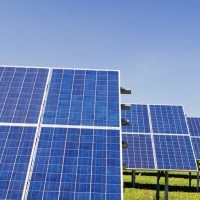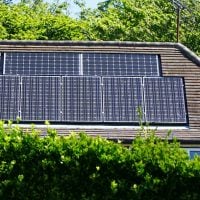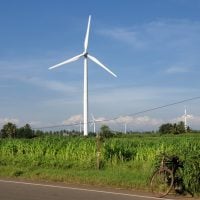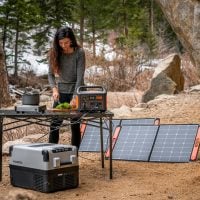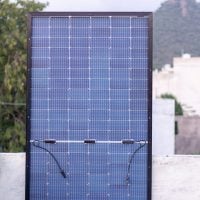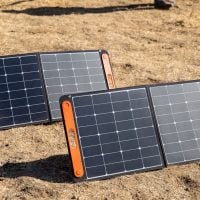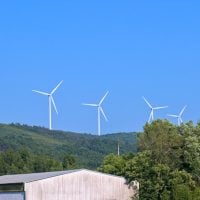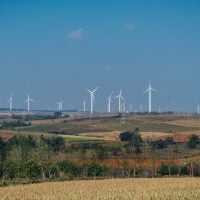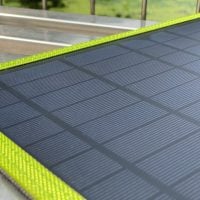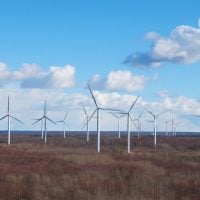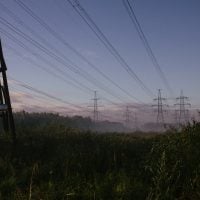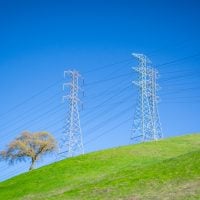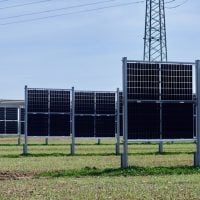To effectively address the energy needs of your NGO, it is crucial to first conduct a thorough assessment of your organization’s specific requirements. This involves engaging with stakeholders, including staff, beneficiaries, and community members, to gather insights on how energy access—or the lack thereof—affects your operations and the communities you serve. For instance, if your NGO focuses on education, understanding how unreliable electricity impacts learning environments can help you articulate the urgency of your energy needs.
By identifying these needs, you can create a compelling narrative that highlights the importance of energy access in achieving your mission. Moreover, understanding your NGO’s energy needs also means evaluating the current energy sources and their limitations. Are you relying on diesel generators that are costly and environmentally damaging?
Or perhaps you are dependent on grid electricity that is often unreliable? By mapping out your existing energy landscape, you can pinpoint gaps and opportunities for improvement. This foundational knowledge will not only guide your project planning but also enhance your credibility when seeking funding, as it demonstrates a clear understanding of the challenges at hand. Are You Working on Solar Innovation or Clean Energy Access? Join us to receive updates.
Researching Available Energy Funding Opportunities
Once you have a clear understanding of your NGO’s energy needs, the next step is to explore available funding opportunities tailored to energy projects. This can involve a combination of government grants, private foundations, and international organizations that focus on sustainable energy initiatives. Websites like Grants.gov or the Foundation Center can be invaluable resources for identifying potential funders.
Additionally, many countries have specific programs aimed at promoting renewable energy; thus, local government websites should not be overlooked. In addition to traditional funding sources, consider innovative financing mechanisms such as crowdfunding or social impact bonds. These alternatives can provide flexible funding options that align with your project’s goals.
For example, a successful crowdfunding campaign can not only raise funds but also engage the community and raise awareness about your cause. By diversifying your funding sources, you increase your chances of securing the necessary resources to implement your energy project.
Identifying the Goals and Objectives of Your Energy Project
Defining clear goals and objectives is essential for any energy project. These should be specific, measurable, achievable, relevant, and time-bound (SMART). For instance, if your NGO aims to install solar panels in a rural community, a goal might be to provide electricity to 100 households within two years.
Objectives could include conducting community workshops on solar technology, securing funding by a specific date, and collaborating with local technicians for installation. Setting these goals not only provides direction but also helps in communicating the project’s significance to potential funders. When you articulate how your project aligns with broader energy access goals or contributes to climate change mitigation, you create a compelling case for support.
Furthermore, having well-defined objectives allows for better monitoring and evaluation later on, ensuring that you can track progress and make necessary adjustments along the way.
Assessing the Eligibility Criteria for Energy Funding Opportunities
Before investing time and resources into a funding application, it is vital to thoroughly assess the eligibility criteria for each opportunity. Funders often have specific requirements regarding the type of organization they support, the geographic area of focus, and the nature of the projects they fund. For example, some grants may only be available to NGOs with a certain level of operational history or those that serve specific demographics.
Understanding these criteria upfront can save your organization from pursuing unsuitable funding opportunities. It also allows you to tailor your proposal to meet the funder’s expectations effectively. If a funder prioritizes projects that demonstrate community involvement, for instance, you can emphasize how your project engages local stakeholders in its design and implementation.
This alignment not only increases your chances of securing funding but also fosters a stronger relationship with the funder.
Evaluating the Financial and Administrative Requirements
Every funding opportunity comes with its own set of financial and administrative requirements that must be carefully evaluated. This includes understanding budgetary constraints, reporting obligations, and compliance issues that may arise during project implementation. For instance, some funders may require detailed financial reports or audits at regular intervals, which necessitates robust financial management systems within your NGO.
Additionally, consider whether your organization has the capacity to meet these requirements without overextending itself. If the administrative burden is too high relative to the potential funding amount, it may be worth reconsidering whether this opportunity aligns with your NGO’s capabilities. Engaging with financial experts or consultants can provide valuable insights into managing these requirements effectively while ensuring compliance with funder expectations.
Considering the Long-Term Sustainability of the Energy Project
Sustainability is a critical aspect of any energy project. Funders increasingly seek projects that not only deliver immediate benefits but also have a lasting impact on communities. To ensure sustainability, consider how your project will be maintained after initial funding ends.
This could involve training local technicians to manage and repair energy systems or establishing community ownership models that empower beneficiaries to take charge of their energy resources. Moreover, integrating sustainability into your project design can enhance its attractiveness to funders. For example, if your project includes educational components that teach community members about energy conservation and management, it demonstrates a commitment to long-term impact.
By showcasing how your project will continue to benefit the community beyond its initial implementation phase, you strengthen your case for funding and contribute to broader goals of sustainable development.
Reviewing the Terms and Conditions of the Funding Opportunity
Before submitting a funding proposal, it is essential to thoroughly review the terms and conditions associated with each opportunity. This includes understanding any restrictions on how funds can be used, reporting requirements, and timelines for project completion. Some funders may have specific stipulations regarding partnerships or collaborations that must be adhered to throughout the project lifecycle.
Being aware of these terms helps prevent potential pitfalls down the line. For instance, if a funder requires that all project materials be sourced locally but this is not feasible for certain components, it could jeopardize your ability to comply with their conditions. By carefully reviewing these details before applying, you can ensure that your project plan aligns with funder expectations and avoid complications during implementation.
Seeking Expert Advice and Guidance
Navigating the complexities of energy funding can be daunting; therefore, seeking expert advice is invaluable. This could involve consulting with professionals who specialize in grant writing or energy project management. Many NGOs have successfully secured funding by leveraging the expertise of consultants who understand the nuances of specific funding opportunities.
Additionally, consider reaching out to organizations that have previously received similar funding. They can provide insights into their experiences—what worked well and what challenges they faced—allowing you to learn from their successes and mistakes. Engaging with experts not only enhances your proposal but also builds a network of support that can be beneficial throughout your project’s lifecycle.
Networking with Other NGOs and Energy Organizations
Building relationships with other NGOs and energy organizations can open doors to collaboration and shared resources. Networking allows you to exchange ideas, share best practices, and even co-develop projects that leverage each organization’s strengths. For example, if another NGO has experience in community engagement while yours specializes in technical implementation, collaborating could enhance both projects’ effectiveness.
Participating in conferences or workshops focused on energy access can also provide valuable networking opportunities. These events often feature discussions on emerging trends in energy funding and innovative solutions being implemented worldwide. By connecting with like-minded organizations and individuals in this space, you not only expand your knowledge but also increase your visibility within the sector.
Preparing a Comprehensive and Convincing Funding Proposal
A well-crafted funding proposal is crucial for securing financial support for your energy project. Start by clearly articulating the problem your project addresses and how it aligns with the funder’s priorities. Use data and real-world examples to illustrate the urgency of the need for energy access in your target community.
Additionally, ensure that your proposal includes a detailed budget that outlines how funds will be allocated across various project components. Transparency in budgeting builds trust with funders and demonstrates responsible financial planning. Finally, include an evaluation plan that outlines how you will measure success and report back to funders on project outcomes.
A comprehensive proposal not only increases your chances of securing funding but also sets a solid foundation for successful project implementation.
Monitoring and Evaluating the Impact of the Energy Project
Once your energy project is underway, continuous monitoring and evaluation are essential for assessing its impact and effectiveness. Establish key performance indicators (KPIs) that align with your project’s goals and objectives; these could include metrics such as the number of households receiving electricity or reductions in carbon emissions due to renewable energy use. Regularly collecting data allows you to make informed decisions about any necessary adjustments during implementation.
Moreover, sharing evaluation results with stakeholders—including funders—demonstrates accountability and transparency while highlighting the positive outcomes achieved through their support. By fostering a culture of learning within your organization, you not only enhance current projects but also lay the groundwork for future initiatives aimed at improving energy access in underserved communities. In conclusion, navigating the landscape of energy funding requires careful planning and strategic execution.
By understanding your NGO’s needs, researching available opportunities, setting clear goals, assessing eligibility criteria, evaluating financial requirements, considering sustainability, reviewing terms and conditions, seeking expert advice, networking effectively, preparing comprehensive proposals, and monitoring impact diligently, you position your organization for success in securing vital resources for energy projects that can transform lives and communities.
When seeking the right energy funding opportunity for your NGO, it’s essential to explore various funding programs that align with your organization’s goals and geographical focus. A related article that might be of interest is the “CFPs: Colourful Cultures – Tourism for Rural Development Small Grants Programme,” which provides insights into funding opportunities aimed at promoting rural development through tourism. This program could offer valuable perspectives on how to align your NGO’s energy projects with broader development goals, potentially opening up new avenues for funding. For more details, you can read the full article by following this link.

